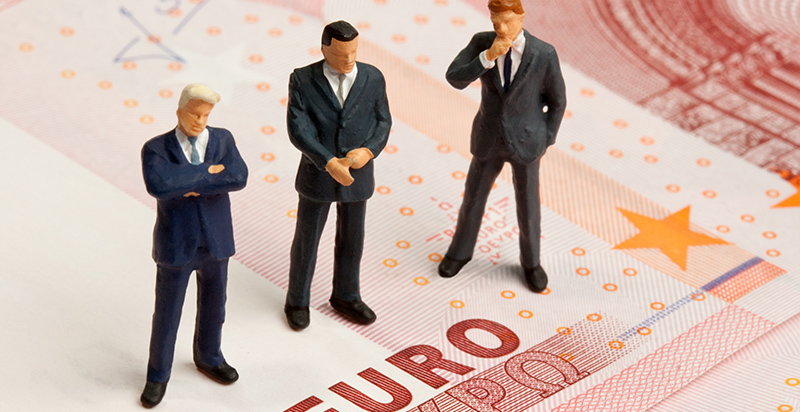Why is it important to sell at a premium price when introducing a product in the European market
Price is an element of the mix that is quite important when introducing a product into the European market. It will determine the level of profitability of this line of product for the years to come. I often have this debate with one of my customers, who is quite anxious to get early sales, but at the same time, his CFO and I keep telling him we don’t want to discount. The CFO thinks of long term profitability and I just don’t like to discount too soon and without a good reason. Here is why.
The first reason, I hate to discount a product when we are at the early stage of launching this product in Europe. Most of the products we have in our portfolio are high-technology products, they have required years of research and development, they often go through a complex and costly certification process, and there is a lot of intellectual property to them. They also solve significant issues for their industry, they have significant value adds for customers. For all these reasons, they should be positioned with a premium price and should not be discounted. In a European customer’s mind, a cheap product means low-quality. If you have clearly articulated how you differentiate from low-quality products and can highlight the benefits from these differentiators for the customer, then a premium price is the way to go. If you are priced as cheap as your competitors, with lower quality, you will then engage in a price battle. You won’t be able to sustain it, but they might be able to, due to the lower costs of their lower quality product.
Cheap is often perceived as low quality and you don’t want to go on that discounting path.
Second, as you introduce your product to the European market, it will be set. You won’t be able to significantly increase your price if you made a mistake and went too low initially. It’s really hard to do. You will be able to increase your prices gradually. Every year, you may slightly increase your prices due to higher costs of parts, raw material, and so on. European customers will have this price level in mind and you won’t be able to make them accept a very significant price increase.
The only caveat to that is if you have warned them this is an introductory price in the market and it will be increased in the coming year. I have seen this practice happening in the service industry. When consultants launch a service package, the price is low to test it and gather customer feedback. Then they refine it and re-launch the product offering at a high price. This is a technique you could use for any type of product. You just need to specify at product launch that this is an introductory price offer and that pricing will change significantly in 12 months. This is acceptable if you pre-announce it.
As a reminder for the European market, it’s critical to know that you have to inform your customers of price increases 90 days in advance. This is a legal requirement. Otherwise, I can guarantee you that your buyers will refuse your price increase.
Third, I have never seen an interested customer, shutting the door because of the price. An interested customer, for which you are solving a problem, will come to you to negotiate. You would be surprised to see how many times a key prospective buyer has come to us and given full clarity on why our price positioning might be a bit high. For example, they are the ones that have full visibility on competitors’ pricing and they are in a position to compare. In that sense, their feedback is invaluable to you as you are introducing a product to a new market. I often find, that a key customer, that has evaluated your product and found that technically it meets their needs and solves their problems, will honestly help you come to the right price. Of course, you have to double-check information, have done your homework in terms of competitors’ pricing. And not just rely on what they say. In terms of negotiation, you need to get something in exchange for providing a better price. For example, they can commit to larger volumes. They can become a case study for you in the market, which is always helpful when you launch a product in a specific market. They can refer you to their peers. They can pre-pay to ease your cash flow. There are so many benefits you can get to counterbalance a lower price level. Never give a lower price for nothing, it must be an exchange. Only give a better price for a very good reason and make it an exception, you can limit it in time, or condition it to a specific volume for example. Remember, you want your customers to earn it.
Here the three reasons why it is important to sell at a premium price when introducing a high-quality product to a new market. If you want to reach out about introducing your product to the European market, reach out and book a short session with me on christelle.damiens@exportia.com.au
About Christelle:

Christelle turned her back to a successful career as a sales representative in the corporate world in Europe. When she moved to Australia in 2006, she started Exportia to share the wealth of her Europe-wide sales experiences for a small business as an export manager and as a sales representative at IBM in Paris.
“Having taken dozens of Australian businesses to Europe, I personally know the difficulty for a small business to significantly grow their sales in the European market. It is a very diverse market and small businesses often don’t know where to start. Small business owners are often caught up with running their business and with their domestic market to be able to allocate enough time to the European market. Lowering the risk for small businesses and guiding them to maximise the export sales results are what drives us at Exportia.”
Christelle has also encapsulated her learning into a book called “Ready Tech Go! – A definitive guide to exporting Australian technology to Europe”. French native speaker, fluent in German and English, with Basic Italian and Hindi.




